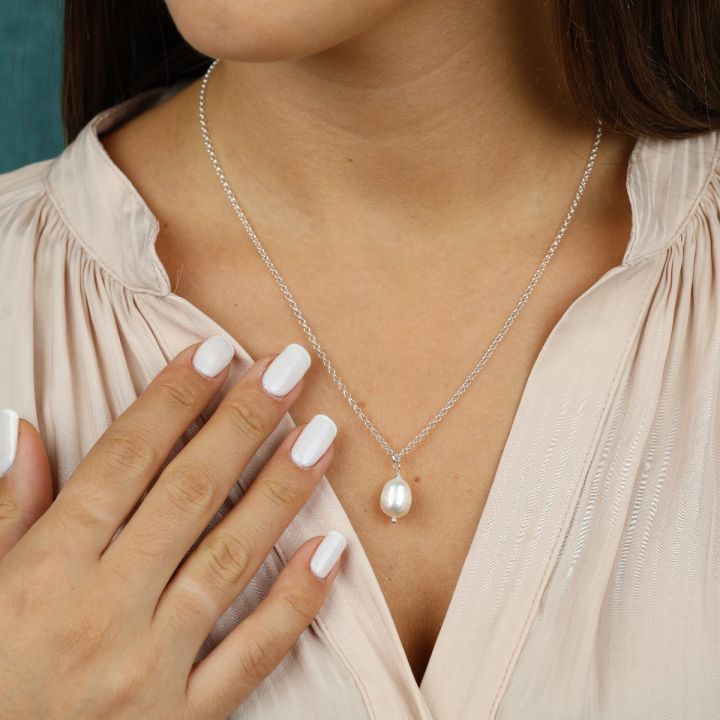Pearl necklaces have long been celebrated as a symbol of timeless elegance and grace. These lustrous gems, whether draped around the neck in a simple strand or intricately woven into a statement piece, have captivated the hearts of jewelry enthusiasts for centuries. Beyond their undeniable beauty, pearl necklaces hold a profound significance that transcends fashion trends. This article delves into the enchanting world of pearl necklaces, exploring their rich history, cultural symbolism, and the enduring charm that makes them a coveted accessory for any wardrobe.
The History of Pearl Necklaces
Pearls have been cherished for their beauty and rarity since ancient times. Initially discovered within the soft tissue of a living shelled mollusk, natural pearls were so rare and expensive that they were reserved almost exclusively for the nobility. The history of pearl necklaces is as deep and varied as the pearls themselves, spanning across civilizations from ancient China and India to Rome and beyond. The evolution of pearl harvesting, notably the development of pearl culturing in the early 20th century by Kokichi Mikimoto, transformed the industry, making pearls more accessible to the general public. This marked a significant shift in the design and availability of pearl necklaces, allowing them to become a staple in jewelry collections worldwide.
Cultural Significance of Pearls
Across cultures, pearls have been imbued with a wealth of symbolism, representing purity, wisdom, and wealth. In ancient Rome, pearls were a status symbol, signifying prestige and affluence. In Chinese culture, pearls were believed to offer protection and attract wealth. The symbolism of pearls extends into mythology and royal adornments, where they have been used to decorate crowns, robes, and other regalia, further cementing their status as objects of great value and beauty.
The Meaning Behind Pearl Necklaces Today
Today, the symbolism of pearl necklaces has evolved, yet they continue to represent elegance, sophistication, and a sense of timeless beauty. They are often chosen for significant occasions such as weddings, anniversaries, and graduations, serving as a symbol of purity, transformation, and the wearer's refined taste. In modern times, pearls are also appreciated for their versatility, seamlessly transitioning from formal to casual settings.
Types of Pearls Used in Necklaces
Pearl necklaces can be crafted from various types of pearls, including freshwater and saltwater varieties. Each type of pearl brings its unique charm and significance, influenced by their colors, shapes, and sizes. Freshwater pearls, commonly found in rivers and lakes, offer a wide range of colors and shapes, making them a popular choice for unique, customizable jewelry. Saltwater pearls, including the luxurious Akoya, Tahitian, and South Sea pearls, are highly prized for their round shape and lustrous sheen, symbolizing classic beauty and sophistication.
|
Pearl Type |
Description |
|
Freshwater |
Sourced from rivers and lakes, these pearls come in a variety of shapes, sizes, and colors, making them ideal for unique and customizable jewelry pieces. |
|
Saltwater |
Includes Akoya, Tahitian, and South Sea pearls. Known for their round shape and lustrous sheen, these pearls are synonymous with luxury and traditional elegance. |
|
Akoya |
Often considered the classic pearl, Akoya pearls are cultivated in Japan and China, prized for their perfect round shape and high luster. Ideal for timeless elegance. |
|
Tahitian |
Cultivated in French Polynesia, these pearls are unique for their dark colors ranging from grey to black, adding an exotic touch to any jewelry collection. |
|
South Sea |
Sourced from the waters of Australia, Indonesia, and the Philippines, these pearls are larger in size and known for their satin-like luster and rich colors. |
How to Choose the Right Pearl Necklace
Choosing the right pearl necklace involves considering the occasion, personal style, and the specific type of pearls. Whether you're dressing for a formal event or looking to add a touch of elegance to your everyday attire, there's a pearl necklace to suit every occasion and style preference. Matching a pearl necklace with your attire can enhance your overall look, embodying sophistication and timeless elegance.
FAQ
What does a pearl necklace symbolize?
Pearl necklaces symbolize purity, wisdom, wealth, and sophistication. They represent a connection to tradition while embracing the wearer's unique elegance and style.
What does it mean when someone gives you a pearl necklace?
Receiving a pearl necklace as a gift often signifies love, respect, and admiration. It can also mark a significant milestone or achievement.
What is the pearl necklace trend?
The pearl necklace trend embraces both classic and contemporary designs, showcasing pearls in various settings that appeal to modern sensibilities while honoring the gem's timeless allure.
What is pearl slang for?
In modern slang, "pearl" can have varied meanings, unrelated to the gem itself and not appropriate for all contexts.
What do pearls mean to a woman?
To a woman, pearls symbolize elegance, grace, and maturity. They are often associated with important life events and personal milestones.
What does the number 3 pearl necklace mean?
A necklace with three pearls can symbolize past, present, and future, often given in the context of a relationship or significant personal growth.
Do guys like pearl necklaces?
Pearl necklaces can appeal to anyone, regardless of gender, especially those who appreciate the beauty and symbolism of pearls. Their universal appeal lies in their elegance and the statement they make about the wearer's sense of style.


